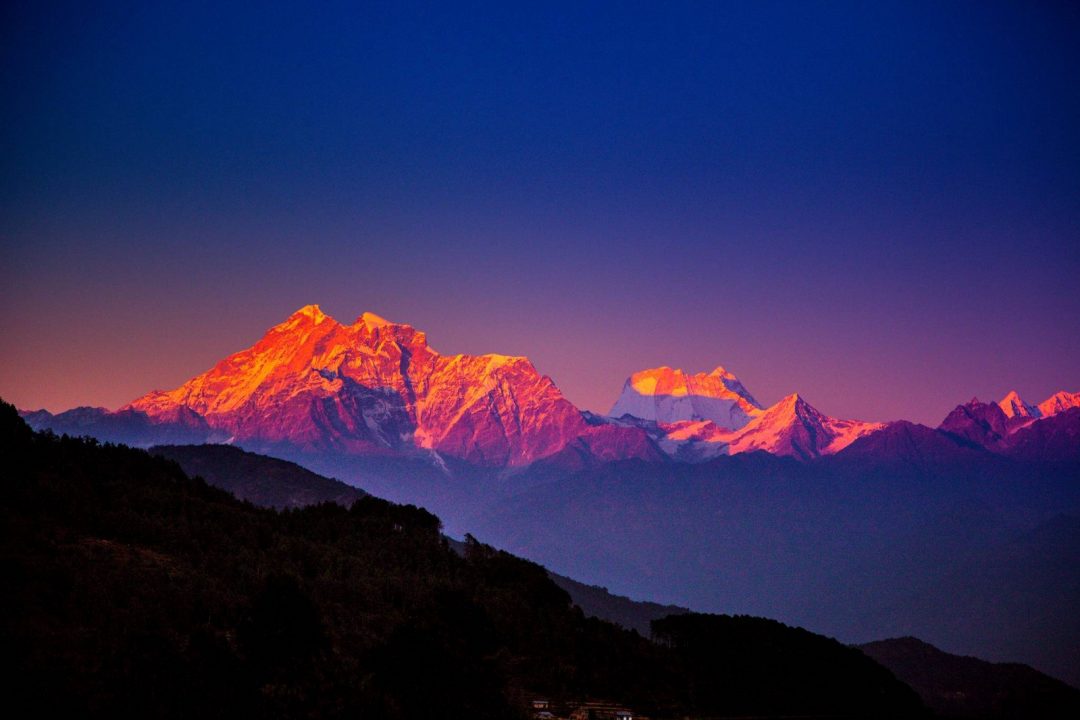Like millions of Indians I, too, love the Himalayas. Given the slightest opportunity, I love to surrender to its peaks, valleys, gorges, rivers, ponds and pristine water bodies. But on each of these occasions, along with enormous joy, the panoramic mountain range also gives me equal doses of distress.
The reasons are obvious. All of us know that were the Himalayas not there, we wouldn’t exist. Its peaks assist the monsoons. Its glaciers lend our rivers the pride of being perennial. The furniture made of wood on its slopes enhances the grace of our residences. Its beauty invites people from around the world to visit India. It is the undisputed guardian of our borders. It is not without reason that our ancestors anointed it with the title of Devalaya.
Bhaas, the iconic Sanskrit poet, had said that the beauty that changes its appearance with every moment is worth relishing. Only those who have seen the Himalayas can understand the inherent meaning of this shloka. Many years ago, at Naggar, near Kullu, I looked at Suraj Taal, a painting by Nicholas Roerich. Using watercolours, Roerich had brought the lake to life. On enquiring I discovered that it was the second lake on the way to Leh from Manali. A spontaneous urge to visit and touch and feel this lake began to grip me. Despite my eagerness, experts said I couldn’t visit it with young children. Also, the road was blocked. “If you want to visit it, you should confirm and come again in August,” they said. But August was still 70 days away.
Google had not yet been invented those days. Computers had come in but they were not part of the lives of ordinary people. In the eighth decade of the last century, people couldn’t even dream of the powerful cars that we have today. There were just one or two trustworthy vehicles to speak of.
The first book that I read about Leh said that travel to the region was an adventure, not an excursion, in bold letters. Roerich had visited it on foot many decades ago, we had cars at least. The destination had become twice as attractive. When we reached there we felt we were in paradise. Snow-clad peaks all around us, a lake full of calm, blue waters surrounded by large rocks that looked like meditating monks and cutting through all this, a serpentine road. There was serenity, cold weather and a howling wind. I sat transfixed for a long time even as my colleagues, who were sitting in a car with the windows rolled up, began shouting that the infra-red rays and the chilly wind would harm my face.Read more
My face still carries a few traces of that afternoon. But it was a priceless and timeless experience. I tried to visit the place once again, but clearly the world had changed in two-and-a-half decades. The traffic of tourists on that road had multiplied many times over. Uncultured drivers were not averse to honking or playing loud music. The lake, once the abode of Shiva and Parvati, has lost some of its grace. The Leh of today isn’t an adventure but excursion.
Are we spoiling the Himalayas or inviting self-destruction? Geologists believe the mountain range is still under formation. That’s why its height increases by two millimetres every year. So an earthquake is enough to shake its foundations and that’s why residents and tourists should stay sensitive to these dangers. But the exact opposite is happening.
Last year, the Annals of Glaciology published a paper by Anil Kulkarni, a scientist with the Indian Institute of Science, Bengaluru. According to this paper, glaciers in the Chandra Basin had melted at a much faster speed between 1984 and 2012. According to Kulkarni, although the threat isn’t immediate, if the trend continues, our rivers may eventually go dry. Can you imagine the existence of human life without rivers such as Jhelum, Chenab, Ravi, Beas, Sutlej, Sindhu, Ganga, Yamuna, Brahmaputra and Spiti?
Kulkarni’s study is based on extensive research, but there is much that an ordinary person like me can comprehend. Let me give you the example of the Sahastra Dhara near Dehradun. Many years ago, looking at its streams, one got the feeling of having arrived at a mini Manali: waterfalls emerging from the womb of mountain ranges, a dense forest surrounding the mountains and a cool pristine breeze that made the setting even more inviting. There is a bungalow built by the public works department near the waterfalls, where Jawaharlal Nehru came and stayed and appreciated nature’s bounty. Today the stream of water has become extremely feeble and nature’s glory has been lost. It has been replaced by a number of concrete buildings. There are hundreds of such stories of destruction. As Indians, we haven’t managed to build a hill station after Independence, but we’ve destroyed the existing ones.
Yesterday, on the occasion of Himalaya Divas (Himalaya Day), you would have seen the government and NGOs going through the customary motions. Till when will we keep celebrating our destruction?
Shashi Shekhar is editor-in-chief Hindustan

